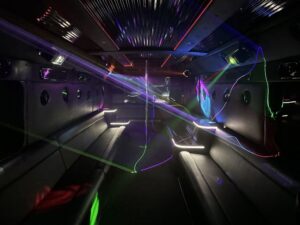Rolling Runways: Maximizing Themed Fashion Shows on Party Buses 🚌
Forget static runways; the future of fashion showcases is mobile, immersive, and undeniably stylish. Party buses, once solely associated with celebratory outings, are evolving into dynamic event spaces, perfectly suited for themed fashion walks and shows. This shift offers a unique blend of convenience, accessibility, and creative freedom, allowing designers and event planners to push boundaries and captivate audiences in novel ways. But transforming a party bus into a captivating fashion experience requires careful planning and creative ingenuity. This article explores the key elements to consider when designing a memorable themed fashion show on wheels.
The party bus format offers a distinct advantage: it’s inherently mobile, enabling designers to stage shows in multiple locations throughout a city or even across different regions, maximizing exposure and creating a sense of adventure for both models and attendees.
Choosing Your Theme: Setting the Stage 🎭
The theme dictates every aspect of the production, from the clothing designs to the bus’s interior décor. Consider these options:
- Decade-Specific Styles: A roaring twenties flapper theme, a groovy seventies disco extravaganza, or the edgy nineties grunge aesthetic all offer distinct visual opportunities.
- Cultural Influences: Explore the rich tapestry of global fashion, highlighting specific regions or cultural styles through clothing, music, and décor.
- Futuristic or Fantasy Worlds: Dive into the realms of science fiction, fantasy, or cyberpunk for a show that is visually striking and unforgettable. Think neon lights, metallic fabrics, and avant-garde designs.
- Sustainability and Upcycling: Showcase eco-conscious designs created from recycled or upcycled materials, promoting sustainable fashion practices.
A clearly defined theme provides a unifying narrative that guides all design choices, ensuring a cohesive and impactful experience.
Interior Design and Ambiance ✨
The party bus itself becomes the runway. Transforming its interior requires careful consideration of lighting, décor, and seating arrangements:
- Lighting Design: Strategic lighting is key. Use a combination of ambient, accent, and task lighting to highlight the clothing and create a dramatic atmosphere. Consider LED strips, spotlights, and even laser projections for a truly immersive experience.
- Décor and Fabrics: Use fabrics, textures, and colors that complement the chosen theme. Think velvet drapes for a glamorous feel, or graffiti art for a street-style show. Mirrors can enhance the sense of space and drama.
- Sound System and Music: Invest in a high-quality sound system capable of playing music and voiceovers clearly. The music selection should directly reinforce the theme.
- Seating Arrangement: Optimize seating to provide guests with clear views of the runway. Consider different tiers or levels for better visibility.
Logistics and Route Planning 🗺️
The mobile nature of the show adds complexity to the logistics. Careful route planning and coordination are essential:
- Route Selection: Choose a route that allows for scenic views or passes significant landmarks relevant to the theme.
- Permits and Regulations: Obtain any necessary permits for filming or staging a fashion show on public roads.
- Safety and Security: Ensure adequate security measures are in place, both on the bus and at any stops along the route.
- Transportation and Support Vehicles: Consider the transportation of models, crew, and equipment. You may need support vehicles to carry extra clothes, props, and equipment.
Marketing and Promotion 📣
Leverage social media and other marketing channels to generate excitement and awareness. Create a buzz around the unique format and themed experience:
- Social Media Campaign: Use Instagram, TikTok, and other platforms to share behind-the-scenes glimpses of the preparation process, model interviews, and sneak peeks of the collection.
- Ticket Sales and Promotion: Develop a clear ticketing strategy and use promotional materials, such as flyers and social media ads, to promote the event.
- Collaborations and Partnerships: Partner with local businesses, influencers, and media outlets to expand reach and create synergy.
Conclusion
Themed fashion walks and shows on party buses offer a fresh, exciting approach to showcasing designs. By carefully curating the theme, meticulously planning the logistics, and employing effective marketing strategies, designers and event planners can create an unforgettable and visually stunning experience that elevates the fashion event to a new level of dynamism and engagement. This unique approach ensures the show not only presents the collection but creates a memorable, immersive journey for attendees. 💃🕺


